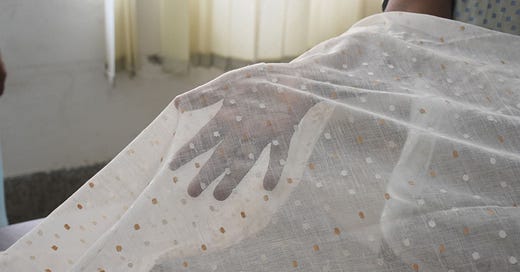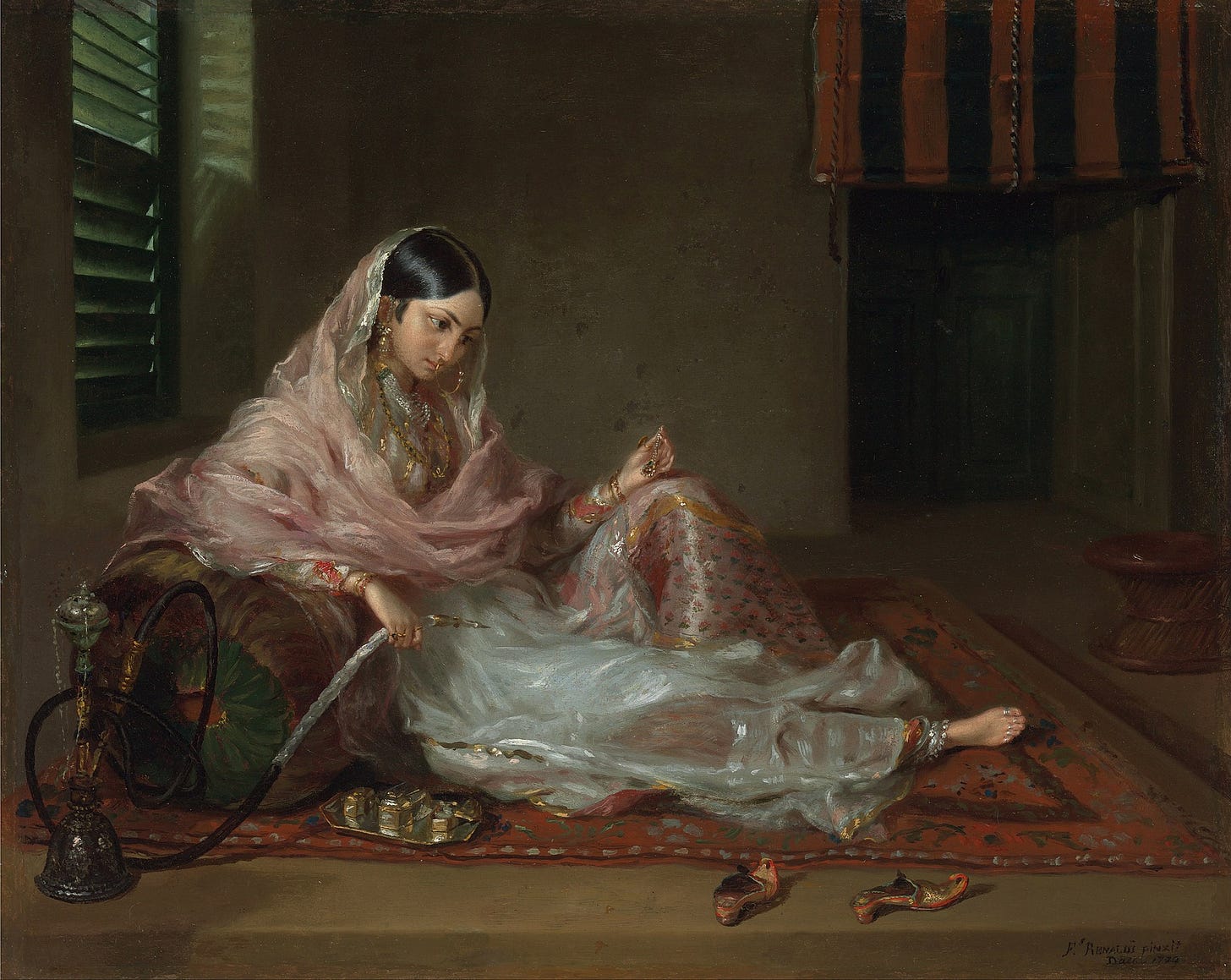Welcome to the Brown History Newsletter. If you’re enjoying this labour of love, please do consider becoming a paid subscriber. Your contribution would help pay the writers and illustrators and support this weekly publication. If you like to submit a writing piece, please send me a pitch by email at brownhistory1947@gmail.com.
Don’t forget to check out our SHOP and our Podcast

The Vanishing Legacy of Dhaka Muslin
"The lightness of it, the softness of it – it was like nothing we have today," – About muslin, by the Late Ruby Ghaznavi, Vice President of the Bangladesh National Craft Council.
The boat was a little wobbly when stepping foot. Once it grew accustomed to the waves and the weight of its passengers, it was calmed and centered. On top, the little girl sat while watching her mother spin the cotton fibres. It was quite humid, the beads of sweat gathered on the mother’s brow early on. Regardless, they were accustomed to the weather. From time to time, the girl would wipe the sweat from her mother’s forehead. She would watch her mother timelessly, hypnotized by the movement of the hands and the thread. Knowing very well, that soon she would be carrying on the family tradition too. Right now, she is too young and clumsy.
Only young women would spin this special cotton due to the gentleness of their hands. As for the elderly, they couldn’t see the fine threads. The girl glanced at other fellow boats, the women diligently spinning yarn, their eyes transfixed towards their hands. At times, women would hum to a song, when they too were entranced by their movements and became lost spinning the fibres.
These were the women who were said to be “fairies” that wove the air-like cotton fibres with their hands. This is where the legends and myths of the Dacca (present-day Dhaka) Muslin had arisen. Stories enveloped this famous fabric which was produced from a plant, “Phuti Karpas” that could only grow near the Meghna River. Spinning the cotton fibres is only part of the process, and yet it is one of the most important processes that led to the formation of this cloth.






